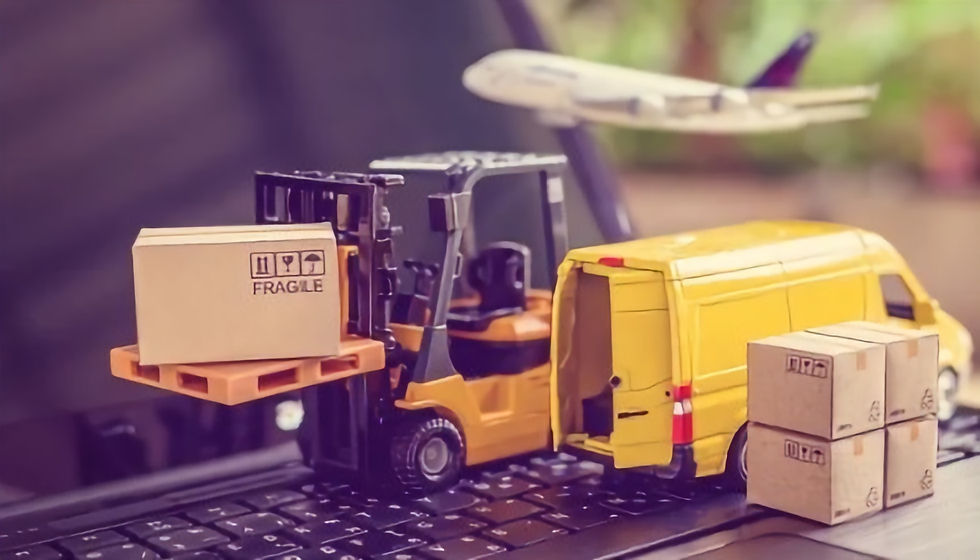D2C E-commerce Logistics Fulfillment: From Order to Delivery, A Comprehensive Guide
- jaykim73
- Apr 23, 2024
- 3 min read
Updated: Jan 30, 2025
D2C E-commerce Logistics Fulfillment: From Order to Delivery, A Comprehensive Guide

E-commerce logistics refers to the specialized processes and operations involved in managing the flow of goods and materials within the supply chain of online retail businesses. It encompasses the planning, execution, and coordination of activities such as order fulfillment, inventory management, warehousing, transportation, and last-mile delivery to ensure timely and efficient delivery of products to customers who purchase goods online. E-commerce logistics involves unique challenges and considerations compared to traditional retail logistics, including handling a high volume of small, individual orders, managing multiple sales channels (such as websites, marketplaces, and social media platforms), and meeting fast delivery expectations driven by consumer demands for convenience and speed. Efficient e-commerce logistics is essential for the success of online retailers, as it directly impacts customer satisfaction, retention, and overall business performance.
The process of e-commerce logistics typically involves several key stages, from receiving orders to delivering products to customers. Here's an overview of the typical steps involved:
Order Processing: The process begins when a customer places an order on the e-commerce platform. The order details, including the items purchased, quantity, shipping address, and payment information, are captured and recorded in the system.
Inventory Management: Once the order is received, the e-commerce company checks its inventory to ensure that the ordered items are in stock. Inventory management systems track stock levels in real-time, allowing the company to fulfill orders accurately and avoid stockouts.
Picking and Packing: After confirming inventory availability, the ordered items are picked from the warehouse shelves or storage locations. Workers then pack the items securely, often using packaging materials that protect the products during transit.
Labeling and Sorting: Each package is labeled with a shipping label containing the recipient's address, tracking number, and other relevant information. Packages are then sorted based on their destination, shipping method, and other factors to streamline the shipping process.
Shipping and Transportation: Once packaged and sorted, the orders are handed over to shipping carriers or logistics partners for transportation. E-commerce companies may utilize a variety of shipping methods, including ground shipping, air freight, or expedited delivery services, depending on factors such as delivery speed, cost, and destination.
Last-Mile Delivery: The final stage of the process involves delivering the packages to the customers' doorsteps. Last-mile delivery providers, such as courier services or postal carriers, transport the packages from distribution centers or fulfillment centers to the customers' addresses. This stage is critical for ensuring timely delivery and customer satisfaction.
Tracking and Notifications: Throughout the entire process, customers may receive updates and notifications regarding the status of their orders. This includes order confirmation emails, shipping notifications with tracking information, and delivery updates to inform customers of the expected delivery date and time.
Returns and Reverse Logistics: In the event that customers wish to return or exchange items, e-commerce companies facilitate the returns process through reverse logistics. Customers initiate returns through the e-commerce platform, and the company arranges for the return shipping, inspects the returned items, and processes refunds or exchanges as needed.
Customer Support and Service: Throughout the process, e-commerce companies provide customer support and assistance to address any inquiries, concerns, or issues that customers may have. This includes providing information about orders, resolving delivery issues, and handling returns and exchanges promptly and professionally.
The process of e-commerce logistics is designed to ensure smooth and efficient order fulfillment, from the moment a customer places an order to the delivery of the products and beyond. Effective e-commerce logistics is essential for meeting customer expectations, driving repeat business, and maintaining a competitive edge in the online retail market.
Click here to learn more about E-commerce Logistics Fulfillment: From Order to Delivery, A Comprehensive Guide here.





Informative guide—D2C e-commerce success depends on smooth logistics. Phase V Fulfillment ensures efficient order processing, inventory management, packing, and fast, reliable delivery.